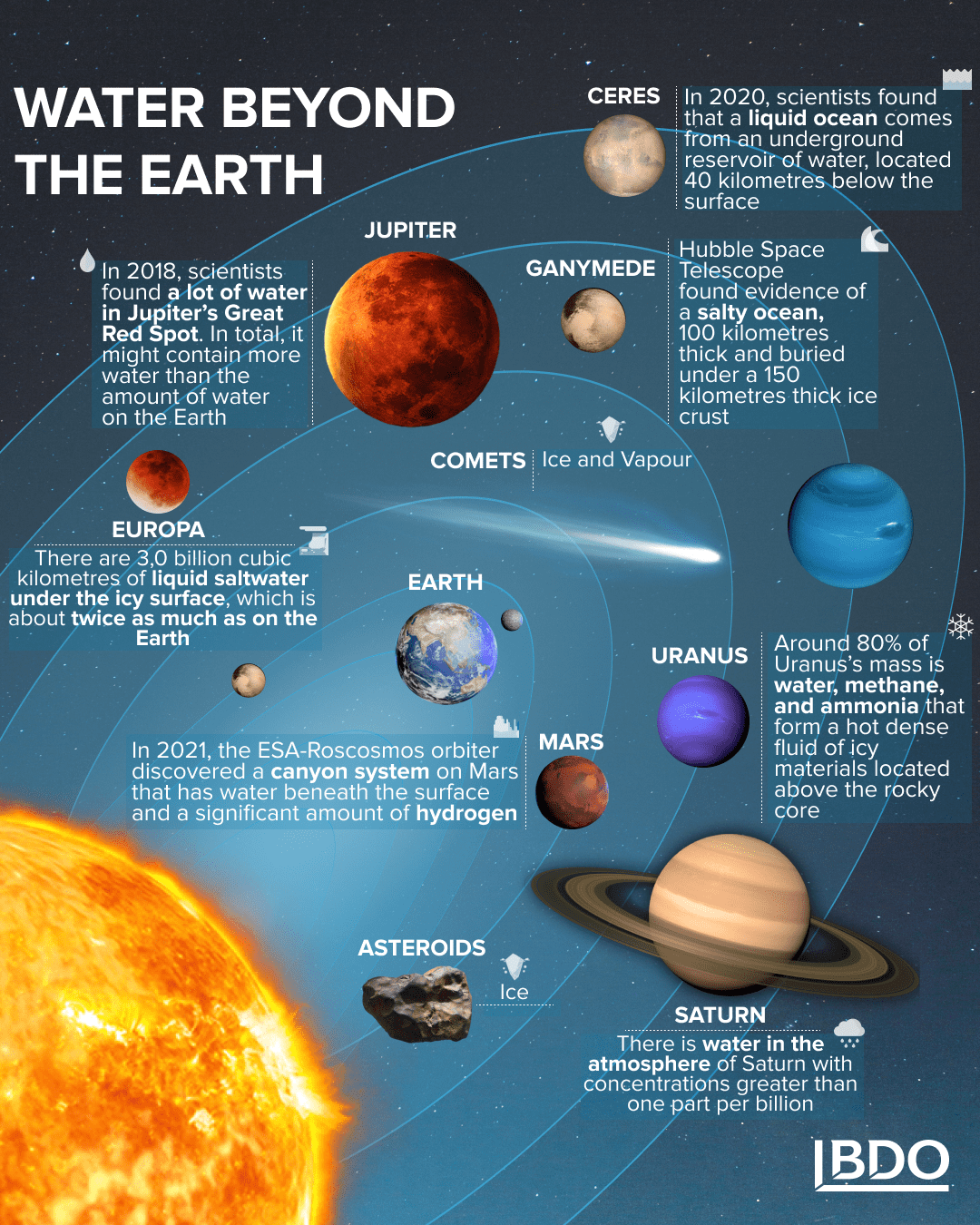The aerospace industry is as prominent today as it has never been. Nowadays, both private companies and government agencies are eager to unlock the mysteries of the Solar system and prepare revolutionary missions to explore the Moon, Mars, and even far beyond. There are ambitious plans to establish human colonies on the Moon and build a self-sustaining city for 1 million people on Mars.
But one question has always been at the forefront of these aspiring plans. Are there enough life-supporting resources, such as water, to bring those ideas to life?
Scientists generally regard the presence of water as one of the prerequisites of any kind of life similar to what we have on Earth. As a result, any probe or lander is always equipped to analyse the surface of a moon or planet in the search of water molecules.
So, is there water in space?
With technological progress, scientists have learned to find evidence of water existence even far beyond the Solar system, while the recent discovery of water has revolutionised current theories on the potential of planets and satellites for water.
In 2015, liquid brine water was identified by NASA’s Curiosity rover in the upper five centimetres of the Martian subsurface. In 2019, NASA identified the presence of water vapour directly above the surface of the Europa satellite. In 2020, the Stratospheric Observatory for Infrared Astronomy (SOFIA) detected water molecules in the Clavius Crater of the Moon’s southern hemisphere. In 2021, scientists found an enormous cloud of water vapour, floating 30 billion miles away in a quasar estimated to contain ~140 trillion times the amount of water on Earth.
These discoveries have proven that the Earth is not the only ocean world in the Solar system. Water exists in diverse forms on other planets, satellites, dwarf planets, and asteroids and might give hints in unveiling the mystery of life existence beyond the Earth.
The next 10 years have enormous potential to revolutionise the whole space industry and completely change how humanity sees and uses space. Among key future missions aimed at water in space exploration are Chang’e 6-8 missions to the Moon (China), Artemis mission to the Moon (NASA), Mars mission (SpaceX), and Europa Clipper mission to Europa (NASA).
Further discovery of space water will boost space development and help space tourism flourish.
The outer space refuelling with LH2 produced from space water will substantially reduce the rocket launch costs and increase the distance of space missions. It will also be crucial for life support, providing astronauts with the necessary water for drinking and hygiene. Extracting water from Mars and the Moon will be more cost-efficient than delivering it from the Earth, which will boost the development of space agriculture & farming. And via the usage of hydrogen-rich plastic for spacecraft and water-filled garments, it will be possible to minimise the effects of space radiation.
Active usage of space water will accelerate further space exploration and give a start to the active mining of rare resources and metals. Maybe in foreseeable future, the recreational infrastructure and scientific equipment on the Moon and Mars will become our new reality.
